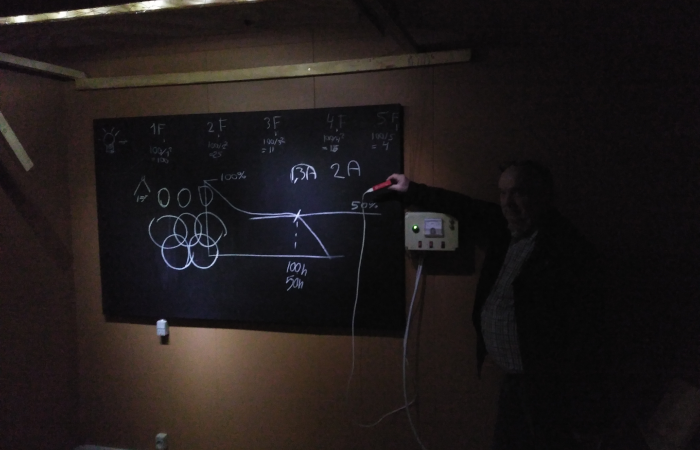More Light! (LED Technology)

PROJECT DETAILS
| Project partners: | Nordic Folkecenter for Renewable Energy |
| Project countries: | Denmark (Currently – looking for expansion) |
| Type of project: | Capacity building with innovative sustainable solutions for rural electrification |
PUBLICATIONS
| More Light! brochure | Download in English | Download in French |
| Train-the-trainer Course | Read about the course |
ABOUT THE PROJECT
We always think at light as something obvious, available to all and as the basis of our civilization. Imagine if our lives were limited to the amount of natural light we receive: forget about reading, or doing anything else in the evening. In Northern countries people would live in the dark for a good part of the year, if we didn’t have electric light.
DANGEROUS LIGHT?
When we say that people do not have light, we mean electric light. For ages fire has been a source of heat – but also of light. And there are still many places in the world where fire are used for illumination purposes.
Look at the top picture: would you dare to read nearby this lamp? That is what many children (and adults) around the world do. These lamps are very common in developing countries and they are normally powered by kerosene. Lamps are quite cheap; kerosene can be expensive.
Not only that. These lamps produce fumes which are inhalated by the people in the house – not to mention the risk of burns. So, yes, light can be dangerous.
SAFE LIGHT?
The solution exists and it’s called LED; by using this technology, very good levels of illumination can be achieved with total safety for the people and with little consumption for the building. As you can see in the second picture, the light difference between an LED and a conventional kerosene lamp is quite important.
However, even if LED technologies require less electricity, they still need a certain amount to work; we are talking of areas which are not connected to the grid, so how can they get the power they need? The answer is of course renewable energies. By installing PV pannels (or small wind turbines), the necessary electricity can be produced (and stored in batteries if needed).
There are however different kind of LEDs, which is why Nordic Folkecenter established the Light Lab. The facility represents a classroom in Mali (1:4) and it aims to find out the right combination of solutions to provide cheap, safe and good light to those who need it.



GOOD AND AFFORDABLE LIGHT
Our goal is to make the installation as cheap as possible, so that it can be affordable by the largest possible group of people.
The lamp in the second picture above is a very good solution, which provides 10 times the light of a kerosene lamp at twice the distance. The cost of this installation is below 1,5 € (12 DKK), battery excluded. We are now trying to lower the expense even further by using materials available everywhere.
The lamp shown is mostly for private usage, but our main study focuses on classroom illumination.
We recently started to use power-banks for our studies and the results seem to be promising and we can now power the whole classroom with a small powerbank.
EDUCATION IS THE FUTURE
Many technologies fail to spread because they are not good enough. We want to avoid this risk and we want to spread only the best practices. This means that we test the different solutions and we evaluate what should be left aside and what should be carried on.
You might wonder why bothering so much with LED lights, which can be easily found in shops, and you are right. But this is not what we are looking at. Our studies do not involve the bulbs, but the single diodes. We are studying the effects of distance on the light, the angles of the diodes, the quality of the different diodes and many other aspects to deliver the best solution.
Once the optimal solution is found, we plan to establish a training course where we will teach all the necessary knowledge to those who want to develop these solutions in developing countries. We want to form qualified trainers who can spread further the knowledge.























